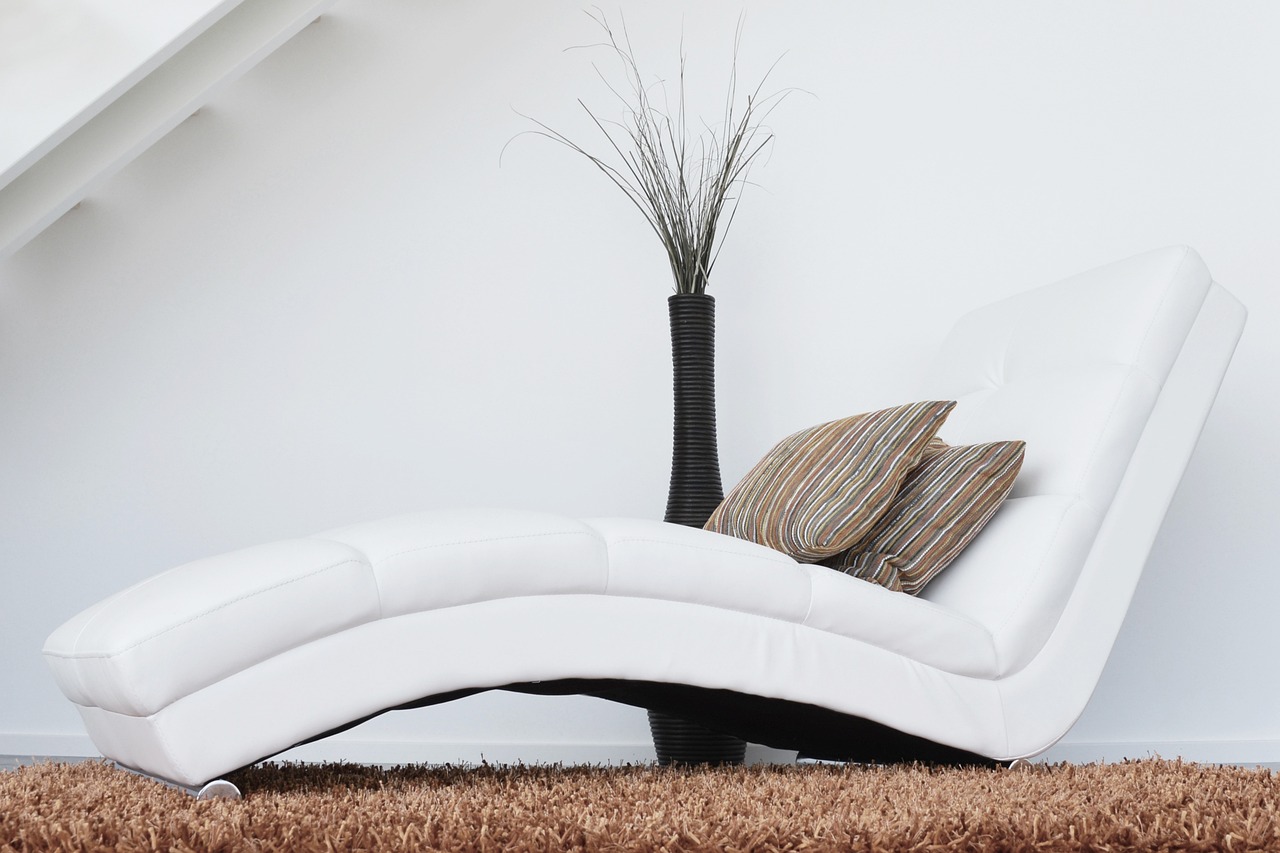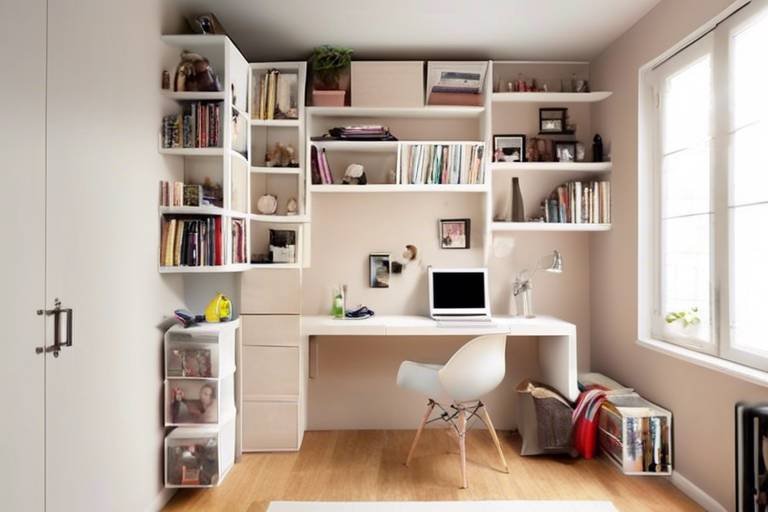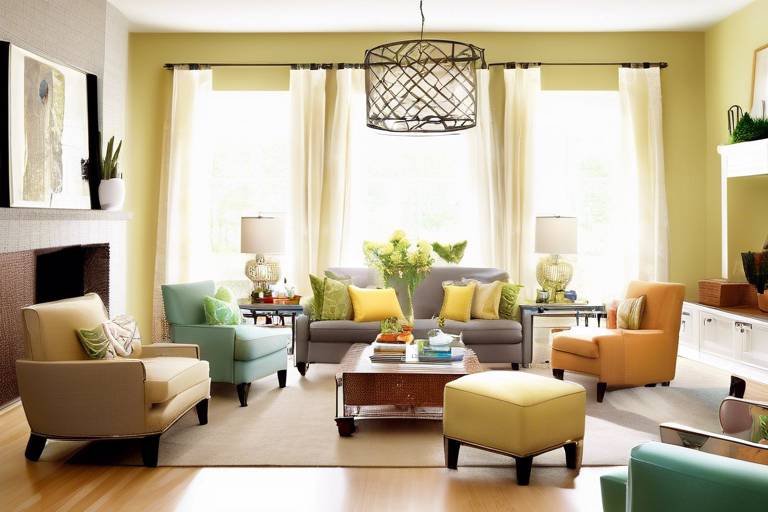How to Choose the Perfect Paint Color for Each Room
Selecting the right paint color for each room in your home is a crucial decision that can completely transform the ambiance and overall feel of the space. The perfect paint color can enhance the room's aesthetics, create a specific mood, and even affect the perceived size of the room. To make the best choice, several key factors need to be considered, such as the room's function, natural lighting, room size, existing décor, color psychology, and more.
When choosing a paint color, it's essential to consider the function of the room. Different rooms serve different purposes, so the paint color should align with the room's intended use. For instance, calming colors like blues and greens are ideal for bedrooms, while energizing shades like reds can be suitable for workout rooms.
Natural lighting plays a significant role in how paint colors appear in a room. Rooms with ample natural light can handle darker colors well, while rooms with limited natural light may benefit from lighter shades to create a more open and airy feel. Assessing the natural lighting in the room can help determine the most suitable paint color.
Room size is another crucial factor to consider when selecting a paint color. Light colors can make small rooms feel more spacious and airy, while dark colors can add warmth and coziness to larger rooms. The size of the room should guide your choice of paint color to create the desired visual effect.
Harmonizing the paint color with the existing décor is essential for a cohesive look. Consider the colors of your furniture, rugs, and other elements in the room when choosing a paint color. Opt for a color that complements and enhances the overall aesthetic of the space, creating a harmonious and visually appealing environment.
Understanding color psychology can help you choose a paint color that aligns with the desired ambiance of the room. Different colors evoke various emotions and moods, so it's essential to select a color that reflects the atmosphere you want to create. For example, blues and greens promote relaxation, while yellows and oranges can bring energy and vibrancy to a room.
Before committing to a paint color, it's crucial to sample the colors on the wall. Paint samples can look different in various lighting conditions, so testing them in the specific room you're painting is essential. By sampling the colors, you can ensure that the chosen paint color looks perfect in the room's lighting and complements the existing décor.
When selecting a paint color, don't forget about the ceiling. While white is a classic choice for ceilings, painting the ceiling a shade lighter than the walls can visually raise the ceiling height and create a sense of spaciousness in the room. Considering the ceiling color as part of your paint selection process can enhance the overall look and feel of the room.
Using a color wheel can be a helpful tool in guiding your paint color selection. Complementary colors, which are opposite each other on the color wheel, create a vibrant contrast when used together. On the other hand, analogous colors, which are next to each other on the wheel, offer a harmonious and cohesive look. Experimenting with different color combinations can help you find the perfect match for your room.

Consider the Room's Function
Selecting the right paint color can transform a room's ambiance. This article provides guidance on choosing the perfect paint color for each room in your home, considering factors like lighting, room size, and desired mood.
When deciding on the perfect paint color for a room, it's essential to consider the function that room serves. Different rooms have different purposes, and the color you choose can enhance the overall experience. For instance, calming colors like blues and greens are ideal for bedrooms, creating a serene and relaxing atmosphere that promotes restful sleep. On the other hand, energizing shades like reds or oranges are perfect for workout rooms, providing a burst of energy and motivation to help you push through your fitness routine.
Natural light can significantly impact how paint colors appear in a room. Rooms with ample natural light can handle darker colors, while rooms with limited natural light may benefit from lighter shades to create a more open feel. The size of a room should influence your paint color choice. Light colors can make small rooms feel more spacious, while dark colors can add coziness to larger rooms. Consider the size of the room when selecting a paint color. Harmonize your paint color choice with your existing décor. Consider the colors of your furniture, rugs, and other elements in the room. Choose a paint color that complements and enhances the overall aesthetic of the space. Colors can evoke different emotions and moods. Understand color psychology to choose a paint color that aligns with the desired ambiance of the room. For example, blues and greens promote relaxation, while yellows and oranges can create a lively atmosphere. Always test paint colors on a small area of the wall before making a final decision. Paint samples can look different in various lighting conditions, so it's essential to see how the color appears in the specific room you're painting. Don't forget about the ceiling when selecting a paint color for a room. While white is a classic choice, painting the ceiling a shade lighter than the walls can visually raise the ceiling height and make the room feel more spacious. Use a color wheel to guide your paint color selection. Complementary colors (opposite each other on the wheel) create a vibrant contrast, while analogous colors (next to each other) offer a harmonious look. Experiment with different color combinations to find the perfect match.
Assess Natural Lighting
Assessing natural lighting is crucial when choosing the perfect paint color for a room. The amount of natural light a room receives can significantly impact how paint colors appear and the overall ambiance of the space. Rooms with ample natural light have the advantage of being able to handle darker colors without feeling too heavy or overwhelming. On the other hand, rooms with limited natural light may benefit from lighter shades to create a brighter and more open feel.
When assessing natural lighting, consider the direction the windows face and the time of day the room is most used. Rooms that receive direct sunlight may need cooler tones to balance the warmth, while north-facing rooms may require warmer hues to counteract the cool light. Understanding how natural light interacts with paint colors can help you make an informed decision that enhances the room's atmosphere.
Additionally, it's essential to test paint samples in different areas of the room to see how natural light affects the color throughout the day. A color that looks perfect in the morning may appear different in the afternoon or evening. By observing how natural light plays with different paint colors, you can ensure that the chosen color will look harmonious and appealing in all lighting conditions.
Consider using lighter shades in rooms with limited natural light to maximize the brightness and create a more spacious feel. Pale colors like soft blues, light grays, or creamy whites can reflect light and make the room feel airy and open. In contrast, rooms with abundant natural light can support deeper and richer colors like jewel tones or earthy hues, adding depth and drama to the space.
Remember that natural lighting is dynamic and changes throughout the day, influencing how colors are perceived. By carefully assessing the natural light in a room and considering how different paint colors interact with it, you can choose the perfect paint color that enhances the room's beauty and creates the desired atmosphere.

Room Size Matters
When it comes to choosing the perfect paint color for a room, one crucial factor to consider is the size of the space. The size of a room plays a significant role in determining which paint colors will work best to enhance its overall look and feel. Light colors are known to make small rooms appear more spacious by reflecting light, while dark colors can create a cozy and intimate atmosphere in larger rooms.
Imagine a small bedroom painted in a light, airy shade of blue. The soft color bounces off the walls, creating an illusion of a larger space and a tranquil environment perfect for relaxation. On the other hand, picture a vast living room painted in a deep, rich burgundy. The dark hue adds warmth and depth to the room, making it feel more inviting and snug.
Consider the analogy of choosing the right outfit for different body types. Just as certain clothing styles can flatter specific body shapes, paint colors can accentuate the size of a room. By selecting the appropriate color palette based on the room's dimensions, you can enhance its visual appeal and create the desired ambiance.
It's essential to strike a balance between the room's size and the paint color chosen. While light colors are generally recommended for small rooms to open up the space, dark colors can be used strategically in larger rooms to create a more intimate setting. Ultimately, understanding how room size influences paint color selection is key to achieving a harmonious and visually appealing interior design.

Coordinate with Existing Décor
When selecting a paint color for a room, it's crucial to coordinate with the existing décor to create a cohesive and visually appealing space. Consider the colors of your furniture, rugs, curtains, and other decorative elements in the room. Harmonizing the paint color with the existing décor can enhance the overall aesthetic and mood of the space.
For example, if you have a room with neutral-colored furniture, you can add a pop of color on the walls to create a focal point. On the other hand, if your décor features bold and vibrant elements, opting for a more subtle paint color can help balance the room's visual impact.
Think of your existing décor as the foundation on which you'll build your color scheme. By choosing a paint color that complements the colors already present in the room, you can achieve a cohesive look that ties everything together seamlessly.
Experimenting with different shades and tones that echo the colors in your décor can lead to a harmonious and well-coordinated space. Don't be afraid to mix and match colors to find the perfect balance that suits your style and preferences.

Understand Color Psychology
Selecting the right paint color can transform a room's ambiance. This article provides guidance on choosing the perfect paint color for each room in your home, considering factors like lighting, room size, and desired mood.
Color psychology plays a crucial role in setting the mood of a room. Different colors can evoke various emotions and energies, impacting the overall atmosphere. For example, blues and greens are known for their calming effects, making them ideal for bedrooms or relaxation spaces. On the other hand, yellows and oranges can add a sense of warmth and energy, perfect for areas where social interactions take place. Understanding color psychology can help you create a space that aligns with the intended purpose and mood.
When choosing a paint color based on color psychology, consider how you want the room to feel. Do you aim for a cozy and intimate setting, or do you prefer a bright and lively environment? By selecting colors that resonate with the desired emotional response, you can enhance the overall experience within the room.
Moreover, it's essential to consider the existing elements in the room when applying color psychology. Harmonizing the paint color with the furniture, decor, and lighting can create a cohesive and balanced look. For instance, pairing cool tones with minimalist furniture can enhance a modern aesthetic, while combining warm hues with wooden accents can create a cozy and inviting atmosphere.
Experimenting with different color combinations can also help you discover unique ways to play with color psychology. Mixing complementary colors for a striking contrast or opting for analogous colors for a more harmonious blend can transform the room's energy and visual appeal. Remember, colors have the power to influence our emotions and perceptions, so choose wisely to create a space that resonates with you.
1. How can I determine the best paint color for a room?
Consider the room's function, natural lighting, size, existing decor, and color psychology to select a paint color that suits the space's purpose and desired ambiance.
2. Should I test paint samples before painting the entire room?
Yes, always test paint samples on a small area of the wall to see how the color appears in different lighting conditions before committing to a final decision.
3. What role does the ceiling play in choosing a paint color?
The ceiling can impact the room's perceived height and spaciousness. Painting it a shade lighter than the walls can visually raise the ceiling and create a more open feel.

Sample Before Committing
Before committing to a paint color for your room, it's crucial to sample the options to ensure the perfect choice. Paint colors can look different under various lighting conditions, so testing them in the specific room you plan to paint is essential. By sampling the colors on a small area of the wall, you can see how they interact with the room's lighting and existing décor.

Consider the Ceiling
When choosing the perfect paint color for a room, it's crucial to consider the ceiling as well. While many opt for the classic choice of white ceilings, there are other options to explore. One effective technique is to paint the ceiling a shade lighter than the walls. This simple trick can visually raise the ceiling height, creating an illusion of more space in the room. By coordinating the ceiling color with the wall color in this manner, you can enhance the overall aesthetic and ambiance of the space.

Consult a Color Wheel
When it comes to choosing the perfect paint color for your room, consulting a color wheel can be a valuable tool. The color wheel provides a visual representation of how different colors relate to each other, helping you create a cohesive color scheme for your space.
One way to use the color wheel is to look at complementary colors, which are located opposite each other on the wheel. Pairing complementary colors can create a vibrant and dynamic look in a room. For example, if you have a blue sofa, consider painting the walls a shade of orange to create a striking contrast.
On the other hand, analogous colors are located next to each other on the color wheel and can be used to create a more harmonious color palette. Choosing colors that are adjacent to each other on the wheel, such as blue and green, can result in a soothing and unified look in a room.
Experimenting with different color combinations from the color wheel can help you find the perfect balance for your space. Whether you prefer bold contrasts or subtle harmonies, the color wheel is a valuable tool for selecting paint colors that enhance the overall aesthetic of your room.
Frequently Asked Questions
- How do I choose the right paint color for a small room?
For small rooms, it's best to opt for light colors like soft pastels or whites. Light colors can create a sense of openness and make the room appear larger than it is. Avoid dark colors as they can make the room feel more cramped.
- Can I use bold colors in a room with limited natural light?
Yes, you can use bold colors in a room with limited natural light, but it's essential to choose the right shade. Opt for rich jewel tones or deep hues that can add depth and drama to the space. Just be sure to balance it with adequate lighting to prevent the room from feeling too dark.
- How can I create a cohesive color scheme throughout my home?
To create a cohesive color scheme, consider using a consistent color palette or theme that flows from room to room. You can choose a main color and then use varying shades of that color in different rooms. Additionally, using accent colors or repeating certain colors in different spaces can help tie everything together.



















